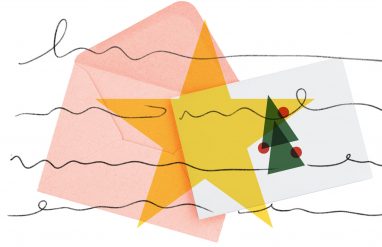If you’re telling someone a story, you don’t recite everything everyone said or did; that would be incredibly boring. You’d just give the highlights: who was there, where you all were, and the important events. In other words, you give a summary of what happened.
What is a summary?
A summary of a text is a brief restatement of the important details. You don’t repeat all of the information and details because, just like a story with too much detail, this would make a summary pretty boring. You have to select and organize the information so it’s easy for someone else to understand and follow.
A summary can be written about anything, including both nonfiction and fiction texts. That means novels, newspaper articles, and even movies can be summarized. Fortunately, the process of writing a good summary is more or less the same no matter what it is that you’re summarizing.
Here are some tips to help your kids write a summary. Plus, summarizing texts, movies, and cartoons helps them build analytical skills and adds a little education into screen time. Win-win?
1. Pick the important details
Before they even start writing a summary, they have to decide what the important details of the text are. This will vary depending on what they’re writing about. However, there are some basic questions you can ask about the text to help them find the important information:
- Who are the most important people in the text?
- What happened?
- How did things happen?
- Why did these things happen?
- When did the action take place?
- Where did events occur?
Helpful hint: we recommend underlining the parts of the story or article that answer these questions. That way it will be easy to go back and reference these details while they write.
For example, if we were writing a summary of Hatchet by Gary Paulsen, we would answer these questions like so:
- Who is the most important person? Brian Robeson, a 13-year-old boy
- What happened? His plane crashes in the wilderness, and Brian has to learn how to survive. He learns to build shelter, hunt for food, and keep himself safe for 54 days.
- How did things happen? Brian was scared and frustrated at first, but then he discovers he is stronger than he realized.
- Why did these things happen? Brian was visiting his dad in Canada because his parents got a divorce. The pilot of the plane had a heart attack and so the plane crashed.
- When did the action take place? In the summer, sometime in the recent past
- Where did the events occur? The Canadian wilderness
These six questions should just be a starting point. Depending on what your kids are summarizing, some of these questions may be more important than others. For example, if they’re writing a summary of a biography, don’t recount every single event that happens in the person’s life (what happened). In that case, pick out just a few life events that are particularly important to include in the summary. However, it might be good to spend more time describing the person’s characteristics (who they are).
Make a Map (optional)
Some find it helpful to organize the key details for a summary by making an outline or using a graphic organizer. Using an outline or graphic organizer can help answer all of the questions we listed above in your summary.
In general, a summary should have an outline similar to this one:
Topic: Describe the main idea or the premise of the text
Important fact/event 1: What, why, and how?
Important fact/event 2: What, why, and how?
Important fact/event 3: What, why, and how?
Conclusion: Restate the main idea or describe overall theme of the passage
Here’s how we would use this outline for our example of Hatchet:
Topic: Brian Robeson, a 13-year-old boy, survives for 54 days alone in the Canadian wilderness.
Important fact/event 1: His parents recently divorced, and he is going to visit his dad in Canada. On the flight, the pilot has a heart attack, and the plane crashes.
Important fact/event 2: Brian is frustrated and scared in the wilderness.
Important fact/event 3: Brian learns to survive by building shelter and hunting for food.
Conclusion: Brian learns that he is stronger than he realized.
2. Write the summary
Once they have all of their facts and details identified and organized, it’s time to write the summary. And remember, don’t just restate the answers to the questions from Step 1. Your kids will need to make sure it’s easy for their audience, the reader, to follow along.
That’s where transitions are handy. They act as markers for the reader. Some transitions to incorporate into a good summary are:
- Introduction: initially, at first, once, before
- Facts/Events: then, after, next, for example, in fact, also
- Conclusion: finally, in the end, therefore
To keep things interesting for the reader, try to vary the sentence length and structure. However, avoid recounting dialogue word-for-word and asking too many questions.
There is no “right” length for a summary. It will depend on the assignment requirements and the length of the text being written about.
Using the outline of our Hatchet summary from Step 1, here’s the summary we wrote:
Hatchet tells the story of Brian Robeson, a 13-year-old boy who survives for 54 days alone in the wilderness. Brian is on a plane headed to Canada to visit his father who lives there after his parents’ divorce. Suddenly, the pilot has a heart attack, and the plane crashes. Initially, Brian is frustrated and scared in the Canadian wilderness. Then, he learns to survive by building shelter and hunting for food. In the end, Brian learns that he is stronger than he realized.
If we were to write a longer summary of the book, we would include more details. The more space there is to write, the more details they can include.
3. Edit the summary
The secret to good writing is good editing. When your kid’s done writing a draft of the summary, you should take some time to help them edit it. Teamwork!
First, review the questions asked in Step 1. Did they answer all of the relevant ones in the draft? If not, go back and add that information.
Did they use transitions? Did they mix up sentence types? Did they avoid repeating dialogue or copying the text?
Finally, read the draft one more time to make sure everything is spelled correctly and they didn’t miss any punctuation.
Final tips: It helps to plan ahead. Explain to your kids that they can keep an eye out for important information as they read a text and take notes on the details. And don’t forget that a good summary is concise. This is one assignment where less is truly more!
You can read more about finding the main idea of a text here.
Want more fun word activities and more tips to help with your kids’ homework? Sign up for Dictionary.com right in your inbox!












